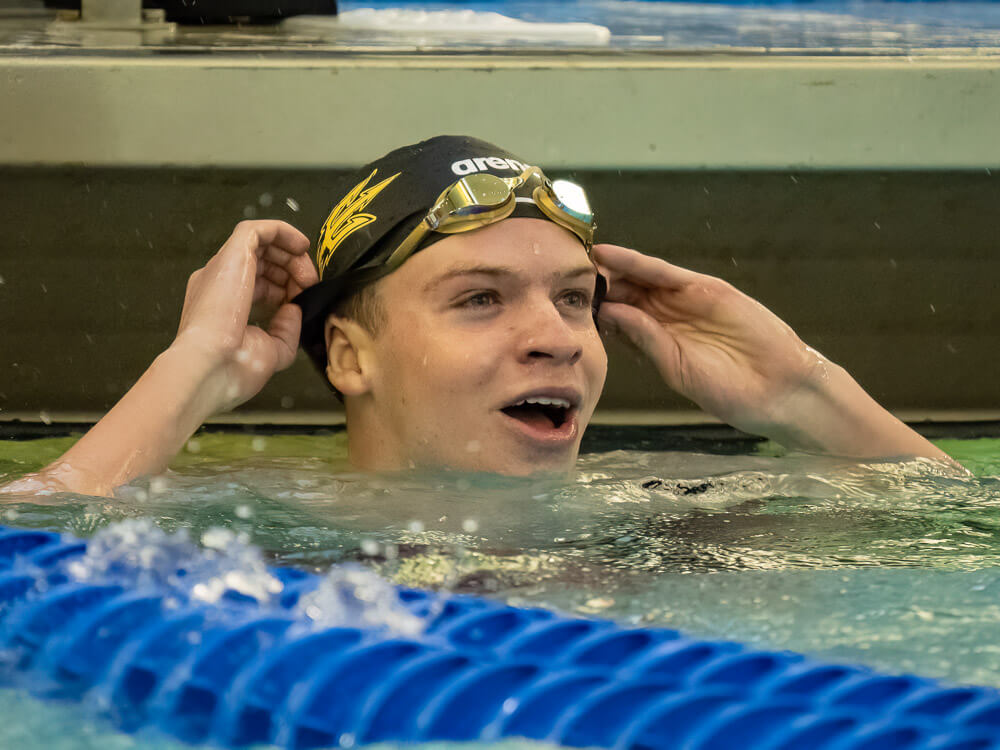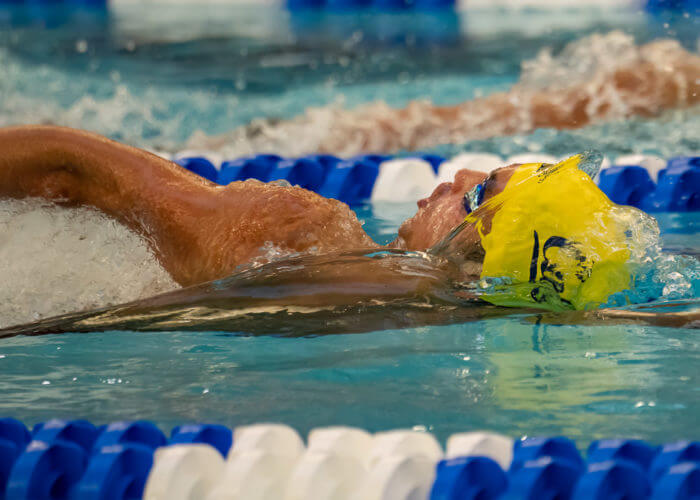College Swimming Tournament? How a Dual Meet Bracket Could Look

College Swimming Tournament? How a Dual Meet Bracket Could Look
This weekend produced some of the most exciting dual meets in recent college swimming history. On the east coast, the University of Virginia hosted two major rivals, NC State and North Carolina, and the meet produced historic performances from Gretchen Walsh plus statement practice-suit times from the UVA and NC State men.
Out west, the two co-favorites for the NCAA men’s team title squared off, and Cal and Arizona State finished in a tie. The likes of Leon Marchand, Destin Lasco, Hubert Kos, Jack Alexy and Gabriel Jett fired off pool records and threatened nation-leading times before Cam Peel and Jonny Kulow recorded a come-from-behind win in the 200 freestyle relay to bring the Sun Devils’ point total to 150 and secure the dead heat.
Swimming is no stranger to tied finishes, with plenty of international medals shared between swimmers who tied. There have been three ties for Olympic gold, in the women’s 100 free in both 1984 and 2016 and in the men’s 50 free in 2016. But in plenty of sports, ties are frowned upon, and methods exist to pinpoint one winner. Basketball has overtime, and baseball games go to extra innings. Soccer matches sometimes finish in a draw, but in an elimination tournament like the World Cup, extra time and potentially penalty kicks determine a winner. Tennis matches and golf tournaments keep going until there is a winner.

Photo Courtesy: Peter H. Bick
In the grand scheme of college swimming, however, do meets do not hold a ton of significance. Remember, it was only one year ago this weekend that Arizona State annihilated the Cal men 211-87 in Tempe, with the Sun Devils racing in tech suits and the Golden Bears in practice suits. Both teams were using the competition as a tune-up for the upcoming championship meets, but it was not a fair fight.
No matter — not much was at stake. And that blowout score did not matter two months later when the Bears earned their second consecutive national title.
But what if these meets had ramifications? What if teams could earn a trophy for their performances in dual meets? For many years, the highest levels of college swimming have revolved around performance at a three-and-a-half day meet in mid-to-late March.
Now, consider this scenario: the conference and NCAA championship meets in February and March remain in place, as do the college invitationals held before and after Thanksgiving. Then, restructure the dual-meet calendar. Hold key conference duals in the fall and early January. Top programs could then reserve two weekends in late January for a tournament.
Recently, swimming social media personality Kyle Sockwell and ASU associate head coach Herbie Behm floated a model for a 12-team swimming playoff, which would follow a similar format to the College Football Playoff model being introduced for the 2024-25 season. Four teams would receive “byes” into the second round, and the winner of each dual meet would advance to take on the next in a bracket-style format.
Could you imagine if we did this whole thing and it ended in a tie? 😂 pic.twitter.com/V4R8eSiPEW
— Herbie Behm (@SirHerb_the3rd) January 21, 2024
Here’s a possible plan for how such a system could work: In one week, the top four seeds could each host two other teams at their facilities. Those other teams could compete one day, with the winner advancing to take on the higher seed the following day.
The four teams that advance out of the semifinal round could converge at one site a week later for a “Final Four,” with semifinal meets held one day and the final the next. The winner could receive a trophy separate from the NCAA Championship trophy, similar to how the NBA honored the winner of the association’s In-Season Tournament that began this season.
Yes, there are downsides to this plan, kinks to work through before it could be unveiled. The powers-that-be would have to determine how to rank and seed teams, and the format could produce dual meets held between two visiting teams, possibly robbing the venue of the enthusiastic cheers that plenty of home fans unleash at their meets. Many coaches would have to rethink their approach to dual meets if there was a true prize. The biggest obstacle, however, is determining how teams who miss the tournament will be able to schedule new meets at the last minute.
This idea probably needs refinement, but it would provide the best teams in the country the opportunity to go head-to-head and add rewards and consequences beyond wins and losses to exciting showdowns like the ones in Charlottesville., Va., and Berkeley, Calif., in recent days. Coaches prioritizing their athletes’ success and a team finish at end-of-season championship meets could use these tournament dual meets as tune-ups, as is the case now, with tech suits becoming the norm in the 11 tournament meets that would be set contested and a required set of events implemented.
Entire rosters could help teams earn a trophy rather than just the top handful of swimmers who excel at a championship meet. Ties would no longer be acceptable, with the system requiring a tiebreaker plan to be activated in case of a similar scenario to Cal-ASU.
Elsewhere in collegiate sports, the NCAA determines champions in tennis, largely an individual sport, through a system of matchups and a single-elimination tournament. It’s only after the team titles are done that an individual singles bracket is set up. Swimming could have the same, keeping the traditional and compelling national meet while making dual meets matter.



